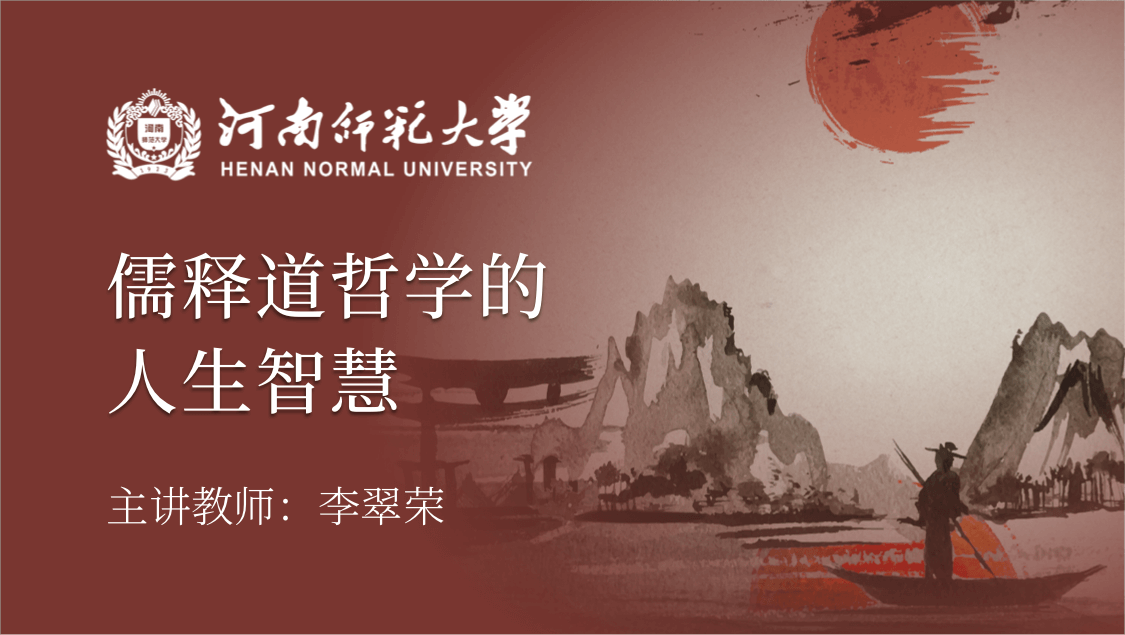
当前课程知识点:Western and Chinese Art: Masters and Classics > 7. Earthliness and Holiness: Giotto and Jan Van Eyck > 7.5 The Ghent Altarpiece > The Ghent Altarpiece
返回《Western and Chinese Art: Masters and Classics》慕课在线视频课程列表
返回《Western and Chinese Art: Masters and Classics》慕课在线视频列表
下面我们通过
扬·凡·艾克的《根特祭坛画》
来分析他是如何来进一步
发扬北部艺术家新的发现
和新的艺术创作手法
扬·凡·艾克最初是为
荷兰的伯爵工作
他从1425年开始供职于
当时在勃艮第的公爵
也就是好人菲利普
他最为知名和刻画入微的作品
是现在依然保存在比利时根特的
圣巴乌大教堂的根特祭坛画
和康平的《梅罗德祭坛画》一样
《根特祭坛画》也是一副视觉盛宴图
它是宗教教义和宗教象征主义的
一种知识的展示和实践
这幅作品据说是由
扬·凡·艾克的哥哥
胡贝特开始创作的
但是由扬·凡·艾克
最终在1432年完成
他自完成起就成为弗兰德斯
最大和最受瞩目的祭坛画之一
后来的很多画家都从中吸取灵感
比如说德国著名的画家
丢勒就在1520年间去过根特
然后看到这幅画
这幅画主要是由根特市长韦德
和他的妻子伊莎贝尔委托的
所以在这幅三联画的外部
我们可以看到底部有两个赞助人
也就是市长和他的妻子
分别跪在画面的最底侧
他们双手合十正在祈祷
而且非常虔诚的注视着他们中间的
施洗者约翰和福音书的作者约翰
在这里我们需要注意的是
画家以一种雕塑的方式
来表现这两位圣徒
画面中间部分是我们刚才所讨论的
天使报喜的这一主题
但是与刚才分析的
康平与安杰利科的表现方式不一样
扬·凡·艾克在画面的
最中心的位置描绘了
弗兰德斯城市的景象
这也是北部绘画一个
非常重要的特点
开始关注城市的风景画
而嵌板最上部分画家描绘了
旧约中的先知
就是这个先知语言宣告了
基督的到来
那么打开这幅祭坛画
我们会发现一幅
非常华丽而庄严的图画
它主要体现的是
中世纪人们关于人类救赎的观念
这幅画的上层表现的是
天国里的现象
主要人物是以
基督的外表出现的圣父上帝
它身上穿着带有
金边的深红色的长袍
头上戴着三层冠冕
象征着三位一体的本性
同时也暗示着他掌管着
天国地上和地下的世界
而他脚下的金冠也
暗示着他君主之主
国王之王
圣母马利亚出现在上帝的右侧
她穿着深绿色的长袍
她头上的冠冕装饰着
百合花和玫瑰花
这些都象征着她的纯真
上帝的左侧是施洗者约翰
他身上穿着翠绿色长袍
上帝 玛丽亚以及约翰的
这种出现的方式
实际上也可以在
佛罗伦萨画家的作品中看到
比如说非常著名的
马萨乔的《圣三位一体》这幅作品
在马萨乔的这幅作品中
我们可以看到赞助人
同样是跪在左右两侧
画面的中心位置是圣三位一体
与上帝 圣歌
也就是圣灵
以及耶稣来表现
而在耶稣的两侧左侧是圣母
右侧就是圣约翰
所以两者相比较我们会发现
扬·凡·艾克和马萨乔
在一定程度上也遵循了
同一绘画传统
那我们再重新回到
扬·凡·艾克的作品
我们看到在圣母马利亚和圣施洗者约翰的
两侧还有身穿着
锦缎丝绒的天使唱诗班
他们边唱边弹奏风琴和其他的乐器
而在天使的两侧则站着亚当和夏娃
他们出现在表现天国的
这一场景是比较罕见的
因为犯下原罪而被逐出了伊甸园
那么画家把他们特意
安置在天国这一场景中
实际上也是暗合了
整幅祭坛画的主题
也就是说亚当和夏娃
代表了被救赎的人
刚才我们提到的马萨乔
也对亚当和夏娃曾经做过描绘
正如我们在下面这幅图中
看到的它所描绘的这一情节
就是天使把亚当和夏娃逐出伊甸园
让他们落在人间的这一场景
那么我们把马萨乔的
作品与扬·凡·艾克的
这一对亚当和夏娃的描绘相比较
我们会发现马萨乔更多的是
关注于人物的内心情感的一种表现
在他的画中亚当非常的羞愧
他用手捂住他的眼睛
而夏娃也是非常的悲痛
我们可以看到她正在哭泣
但是扬·凡·艾克对亚当和夏娃的
描绘呈现出一种完全不同的面貌
他似乎是面对了非常真实的模特儿
他非常精确的描绘了
人体的质感还有色彩
从而把生命注入到了
这个绘画的形式之中
这一救赎主题在祭坛画的
下层表现得更为突出
下层的画面中间是一个祭坛
祭坛上的羔羊表示着
基督牺牲对人类的救赎
他和天空中代表圣灵的白鸽
以及与上层的圣父上帝共同构成了
三位一体的概念的表述
这也是与我们刚才所讲到马萨乔的
《圣三位一体》的这种表现方式相契合
祭坛的前方是生命之泉
它流过了绿色的草地
而这样的画面安排也源自于
圣经中的描述
《新约全书》中
提到一到生命水的河
明亮如水晶
从上帝和羔羊的宝座中流出
在画面两侧我们可以看到有着
从四面八方走过来的虔诚的跪众
他们向羔羊的祭坛移动
两侧嵌板中也象征着
对四种基本德行的代表
从左到右我们可以看到
代表公正的法官 坚毅的骑士
虔诚的朝圣者
还有节制的修士
生命之泉旁边跪着的一边是
使徒和一些穿着红衣的殉教者
右边是手拿着福音书的
传教士和先知们
后者的右侧是纯真的圣女们
左侧是一些圣徒
祭坛的周围围绕着天使唱诗班
而且在这里值得注意的是
画面背景中出现的城市
很像当时弗兰德斯的城市
比如说乌特勒支
尤其是它的大教堂
所以在这里扬·凡·艾克
也进一步继承了刚才我们提到的
康平他作品中
对城市风景的一种描绘
扬·凡·艾克的这幅画
整幅画面非常的宏伟
但是画家并没有牺牲细节
相反所有的细节
都描绘得非常的精确
非常的完美
令人信服
比如说下面这幅图
所表现的上帝头上带着的冠冕
它上面的宝石 珍珠
以及黄金的光泽还有形状 肌理
不同材质的表现都非常的精确
仿佛触手可摸
下面这一幅细节图
我们可以看到圣母头发的
这种蓬松质感
厚重的衣服上面的金子的闪光
还有镶嵌的宝石的这种璀璨
都描绘得惟妙惟肖
而且画家也没有忽略
圣母背后的墙纸的花纹
甚至圣母手中拿着的书
上面的文字都清晰可辨
这些细节都散发着神圣的光芒
他以一种虔诚的敏感和
细致入微的观察
来描绘生活中最为平常的事物
这种对细节的细致描绘
实际上也与之前的国际哥特式的
风格是相联系的
比如说中世纪时期
北部非常著名的林堡兄弟的作品
下面这幅图我们看到的是林堡兄弟
为法国国王的弟弟勃艮第公爵
所创作的祈祷书
这一祈祷书用于日课的祈祷
配有一份月历
每个月都有一幅配图
描绘出了当时的典型的季节性的
农民或者是贵族的活动
我们看到的这幅图它表现的
是一个五月的场景
一些贵族骑着马正在出游
林堡兄弟用很多笔触来描绘细节
比如说人物的衣着
衣着的纹理
发光的宝石
背景中的树木
以及后面的建筑等等
都描绘得非常的细致
但是仔细观察我们会发现
林堡兄弟在这里并不关心
所有事物的实际的面貌
他所描绘的事物都是理想的
程式化的
而且透视也不真实
相比较之下扬·凡·艾克
所观察的自然则更为耐心 准确
我们可以看到同样在画一片树林
扬·凡·艾克则描绘出每一片叶子
包括叶子的反光
对后面教堂的描绘也是非常的逼真
他笔下所画的马也更为有生命力
如果我们看林堡兄弟画的马
他似乎看起来像一个玩具木马
没有生命力
但是在他的创作中
通过对马的眼睛
马的皮肤的褶皱的细心描绘
甚至包括通过光影阴暗效果
来描绘马的四肢
使四肢更加的圆浑 体积感
通过这些方式使它笔下的马
更为真实
所以在扬·凡·艾克的作品中
他不仅观察细节
而且以非常高超的技巧来描绘出细节
那么这种对细节的描绘
实际上也是建立在扬·凡·艾克
对绘画技术的改进基础上
很多的艺术史家认为
扬·凡·艾克实际上
是油画的发明者
当然这种发明与
意大利文艺复兴时期的发明
比如说透视法是不一样的
它是通过获得一种
新的配方来调制颜料
以便把颜料涂抹到画板上
来进行创作的发明
因为那个时候的画家
并不是像现在的画家一样
他们并不是使用直接的管状的
或者是盒装的
现成的颜料
他们需要自己来配制
需要从植物或者是
矿物质中提取原料
然后把它们磨成粉状
在使用的时候再加入一些
液体调成糊状来进行创作
中世纪时期这种液体
主要是蛋制成的
所以用这种做法来创作
绘画也叫做蛋胶画法
这也是我们在前面讨论过
乔托《升座圣母》中所采用的办法
这种方法比较适用
但是它的缺点是它干得非常快
很难使这个色彩慢慢的相互转换化
达到一种柔和的过度的一种效果
所以扬·凡·艾克做了一种改进
他用油来替代蛋
这样做画的时候就能够更加的从容
更加准确
能够制作出有光亮的颜料
通过用这种新的方法来创作绘画
就可以来表现透明的色层
能够用尖笔在画面点出亮光
从而获得一种高度精确的效果
所以通过这种涂上多层
比较稀薄的油画颜料的技法
就可以塑造出前所未有的丰富色彩
营造出一种高饱和度的色调
而且通过有条理
并且缓慢的笔触就很容易使
所有的颜料融合在一起
从而呈现出一种镜面般的平滑效果
所以浓重强烈的色彩
闪亮的这种错觉
以及这种瓷釉般的表面就成为
15世纪弗兰德斯绘画的
一个非常重要的特征
这些特征与之前的光线非常强烈
表面粗糙的蛋彩画形成了
一种鲜明的对比
所以弗兰德斯的画家
就采用这种性能卓越的
而且适应性非常强的油画材料
来精确地再现日常生活中
有着各种绚丽色彩的细节
-1.1Factual impairment between image and message
--Factual impairment between image and message
-1.2Relationship between Fact and Truth
--Relationship between Fact and Truth
-1.3The image revelry in the information age
--The image revelry in the information age
-1.4 Nature, animal and human body art
--Nature, animal and human body art
-1.5 Art: from concrete bodies to metaphorical constructions
--Art: from concrete bodies to metaphorical constructions
-1.6 On defining art
-1.7 Globalization and Consumerism
--Globalization and Consumerism
-1.8 Art and Anti-art
-1.9The value classics hold to the modern time
--The value classics hold to the modern time
-Homework1
-2.1 The occurrence of prehistoric art
--The occurrence of prehistoric art
-2.2 Mysterious cave mural paintings
--Mysterious cave mural paintings
-2.3 Symbolism of rock engravings
--Symbolism of rock engravings
-2.4 Expressive functions about prehistoric painting
--Expressive functions about prehistoric painting
-2.5 Aesthetic characters of prehistoric art
--Aesthetic characters of prehistoric art
-2.6 The tribal art of bodily operation
--The tribal art of bodily operation
-2.7 The construction to reach the heaven
--The construction to reach the heaven
-2.8 Immortal art in ancient Egyptian
-- Immortal art in ancient Egyptian
-Homework2
-3.1 The relationship between mythology and Greek culture
--The relationship between mythology and Greek culture
-3.2 The marks of the epics written by Homer
--The marks of the epics written by Homer
-3.3 Three greatest tragedy drammatists in Greece
--Three greatest tragedy drammatists in Greece
-3.4 The aesthetics woven into ancient Greek architecture
--The aesthetics woven into ancient Greek architecture
-3.5 The ancient Greek sculpture
-3.6 The Greek sculpture of the classic age
--The Greek sculpture of the classic age
-3.7 Works of Phidias
-3.8 The essence and verve of ancient Greek classical art
--The essence and verve of ancient Greek classical art
-Homework3
-4.1The beginning of Chinese painting and Calligraphy
--The beginning of Chinese painting and Calligraphy
-4.2 Majesty and divinity from bronze ware
--Majesty and divinity from bronze ware
-4.3 The Duke Mao Tripod and eternal characters
--The Duke Mao Tripod and eternal characters
-4.4The Philosophy of Chuang Tzu
--The Philosophy of Chuang Tzu
-4.5Qin Shi Huang’s Terracotta Warriors
--Qin Shi Huang’s Terracotta Warriors
-4.6The painting in the Han Dynasty
--The painting in the Han Dynasty
-4.7 The sculpture in the Han Dynasty
--The sculpture in the Han Dynasty
-Homework4
-5.1Master Chuang Tzu's impact on the Wei and Jin Dynasties
--Master Chuang Tzu's impact on the Wei and Jin Dynasties
-5.2Talking about Ji Kang
-5.3 The general spirit of the Wei and Jin Dynasties
--The general spirit of the Wei and Jin Dynasties
-5.4 Wang Xizhi and his unrivalled attainment in calligraphy
--Wang Xizhi and his unrivalled attainment in calligraphy
-5.5 A Preface to the Orchid Pavilion
-- A Preface to the Orchid Pavilion
-5.6 The penmanship of two famous calligraphers surnamed Wang
--The penmanship of two famous calligraphers surnamed Wang
-5.7Gu Kaizhi and his painting
-5.8 Great poet Tao Yuanming
-Homework5
-6.1The Chan School in the Tang dynasty
--The Chan School in the Tang dynasty
-6.2“Cursive King”: Zhang Xu
-6.3《Four Calligraphy Works of Ancient Poems》
--《Four Calligraphy Works of Ancient Poems》
-6.4Zhang Xu and Huai Su
-6.5Wu Daozi and his paintings
-6.6Wang Wei and Chinese landscape painting
--Wang Wei and Chinese landscape painting
-6.7The relation of painting and poetry
--The relation of painting and poetry
-Homework6
-7.1 The beginning of Renaissance: Giotto
--The beginning of Renaissance: Giotto
-7.2 Giotto’s naturalism
-7.3 The frescoes in the Arenal Chapel
--The frescoes in the Arenal Chapel
-7.4 The Renaissance artist in north Europe: Robert Campin
--The Renaissance artist in north Europe: Robert Campin
-7.5 The Ghent Altarpiece
-7.6 Jan Van Eyck’s secular paintings
-- Jan Van Eyck’s secular paintings
-Homework7
-8.1 The beauty of dawn during Renaissance
--The beauty of dawn during Renaissance
-8.2 The reproducer of nature: Da Vinci
--The reproducer of nature: Da Vinci
-8.3 The immortal work Mona Lisa
-8.4 The classicism of Raphael
-8.5 The Sistine Chapel ceiling
-8.6 The mythology and sculpture of Moses
--The mythology and sculpture of Moses
-8.7 Michelangelo's struggle between life and death
-- Michelangelo's struggle between life and death
-8.8 The perceptual Titian and Venice
--The perceptual Titian and Venice
-Homework8
-9.1Rubens and the Baroque Art
-9.2Poussin and his classical spirit
--Poussin and his classical spirit
-9.3Rembrandt and his aptitude of wielding light and shadow
--Rembrandt and his aptitude of wielding light and shadow
-9.4 Rembrandt in his self-portrait
--Rembrandt in his self-portrait
-9.5 Vermeer and his painting
-Homework9
-10.1Landscape painting from the Five Dynasties period to the Northern Song Dynasty
--Landscape painting from the Five Dynasties period to the Northern Song Dynasty
-10.2 Creating painting out of poetry by Emperor Huizong of Song
--Creating painting out of poetry by Emperor Huizong of Song
-10.3 Viewing the small through the large
--Viewing the small through the large
-10.4 Combining the tangible with the intangible
--Combining the tangible with the intangible
-10.5 The atmosphere of freedom, detachedness and ease of landscape painting
-- The atmosphere of freedom, detachedness and ease of landscape painting
-10.6 Dwelling in the Fuchun Mountains
--Dwelling in the Fuchun Mountains
-10.7 Friendliness in Ni Zan’s painting
--Friendliness in Ni Zan’s painting
-10.8 A pristine and boundless world in Ni Zan’s painting
--A pristine and boundless world in Ni Zan’s painting
-Homework10
-11.1The origin and expression of the madman culture
--The origin and expression of the madman culture
-11.2 The madman Li Zhi
-11.3 Xu Wei: from gifted scholar to mad man
--Xu Wei: from gifted scholar to mad man
-11.4 The aesthetic ideology of Xu Wei
--The aesthetic ideology of Xu Wei
-11.5 Xu Wei’s notions and theories on painting practise
--Xu Wei’s notions and theories on painting practise
-11.6 Miscellaneous Plants and Flowers
--Miscellaneous Plants and Flowers
-11.7 Drunkenness in Xu Wei's art
-Homework11
-12.1 Winckelmann
-12.2 Neoclassical master: David
-12.3 The Death of Marat
-12.4 The Intervention of the Sabine Women
--The Intervention of the Sabine Women
-12.5 The aestheticism works by Ingres
--The aestheticism works by Ingres
-12.6 The contrast between photography and paintings
--The contrast between photography and paintings
-12.7 Courbet and realism
-Homework12
-13.1 Rousseau and emotionalism
-13.2 Kant's view about the beautiful and the sublime
--Kant's view about the beautiful and the sublime
-13.3 Goethe, from Werther to Faust
--Goethe, from Werther to Faust
-13.4 Byron, romantic hero
-13.5 The painting laws of Romanticism
--The painting laws of Romanticism
-13.6 John Constable
-13.7 The world of Turner
-Homework13
-14.1 Western modernism and Rodin
-14.2 The Gates of Hell
-14.3 Painting conception of Manet
--Painting conception of Manet
-14.4 Impressionism of Monet
-14.5 Cezanne:the Father of the art of modernism
--Cezanne:the Father of the art of modernism
-14.6 Van Gogh:painting and life
-14.7 The art value of Van Gogh
-Homework14
-15.1 art modernism
-15.2 porcelain urinal of Marcel Duchamp
--porcelain urinal of Marcel Duchamp
-15.3 This is not a pipe
-15.4 The great innovation artist: Picasso
--The great innovation artist: Picasso
-15.5 the infinity of art
-15.6 the art after Andy Warhol
-Homework15
-Final exam


